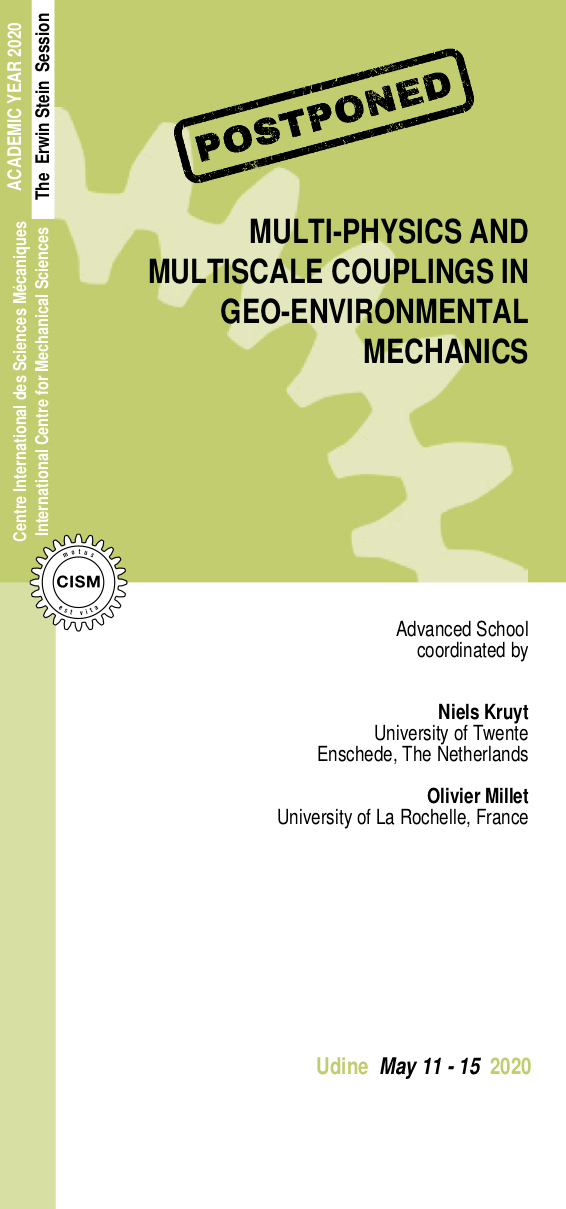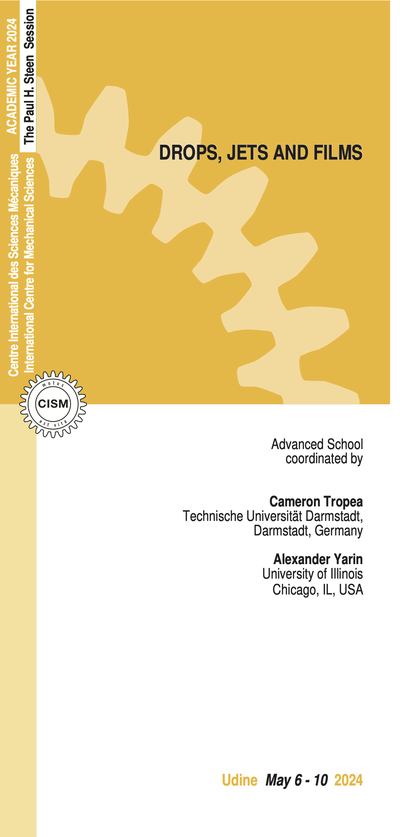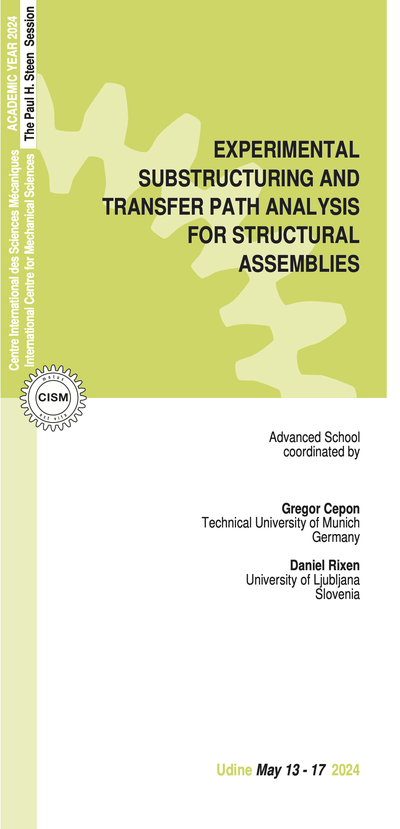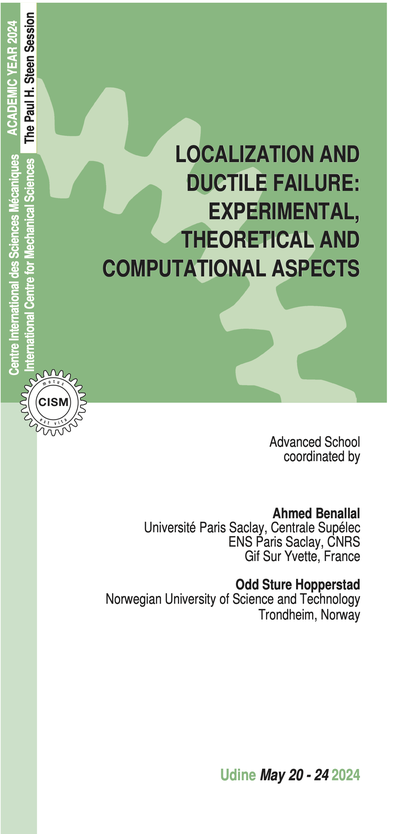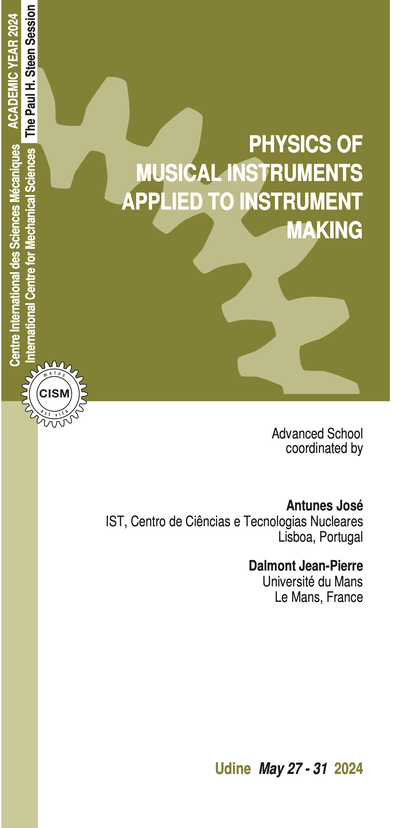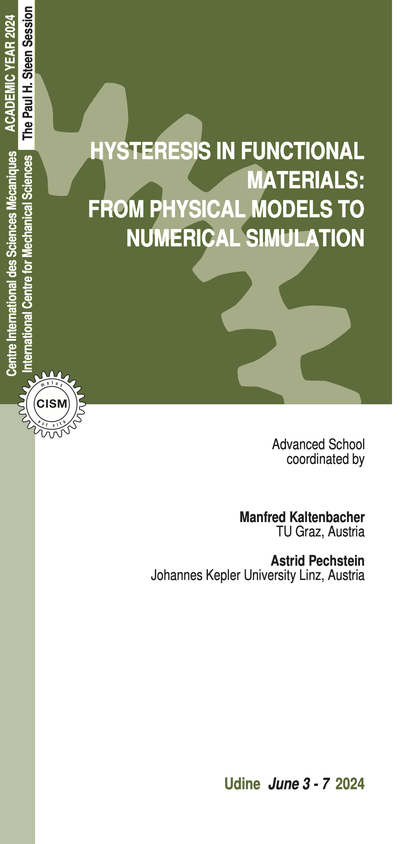E. Turco, F. dell'Isola, A. Misra: A nonlinear Lagrangian particle model for grains assemblies including grain relative rotations. International Journal for Numerical and Analytical Methods in Geomechanics 43: 1051-1079 (2019).
F. dell'Isola, D. Steigmann (Eds.). Discrete and Continuum Models for Complex Metamaterials. Cambridge University Press (2020).
N.P. Kruyt: Statics and kinematics of discrete Cosserat-type granular materials. International Journal of Solids and Structures 40: 511-534 (2003).
N.P. Kruyt, L. Rothenburg: A micromechanical study of dilatancy of granular materials. Journal of the Mechanics and Physics of Solids 56: 411-427 (2016).
G. Gagneux, O. Millet: Analytic calculation of capillary bridges properties deduced as an inverse problem from experimental data. Transport in Porous Media 105: 117-139 (2014).
H.-N.-G. Nguyen, O. Millet, G. Gagneux: Exact calculation of axisymmetric capillary bridge properties between two unequal-sized spherical particles. Math-ematics and Mechanics of Solids, 24(9): 2767-2784 (2019).
R. Wan, F. Nicot, F. Darve: Failure in Geomaterials. ISTE Press – Elsevier (2017).
F. Nicot, F. Darve: The H-microdirectional model: accounting for a mesoscopic scale. Mechanics of Materials 43: 918-929 (2011).
X. Li, H.-S. Yu, X.-S. Li: Macro-micro relations in granular mechanics. International Journal of Solids and Structures, 46: 4331-4341 (2009).
X. Li, H.-S. Yu: Fabric, force and strength anisotropies in granular materials: A micromechanical insight. Acta Mechanica, 225: 2345-2362 (2014).
J. Duriez, M. Eghbalian, R. Wan, F. Darve: The micromechanical nature of stresses in triphasic gran-ular media with interfaces. Journal of the Mechanics and Physics of Solids 99: 495-511 (2017).
R. Wan, S. Khosravani, M. Pouragha: Micromechanical analysis of force transport in wet granular soils. Vadose Zone Journal, 13: vzj2013.06.0113 (2014).
N. Lu, W. J. Likos: Unsaturated Soil Mechanics, Wiley (2004).
6 lectures on: micro-macro identification between discrete and continuum models, multiscale architectured metamaterials, complex discrete Lagrangian systems, higher gradient and microstructured continua.
6 lectures on: basics of continuum mechanics, Discrete Element Method simulations; micromechanics and homogenization of granular materials; micromechanical expression for stress and strain; fabric; dilatancy.
6 lectures on: experimental observations of the complex soil constitutive behaviour, structure description and state characterization, particle-continuum scaling-up, directional statistic technique, implementation of complex loading path in DEM simulation, force-transmission and deformation pattern, micro-mechanisms contributing to the loading and history dependence of granular materials.
6 lectures on: partially saturated granular media, solutions of Young-Laplace equation for axisymmetric capillary bridges, minimization of surface energy under constraints, states of equilibrium, stability analysis and rupture of capillary bridges, experimental measurement techniques.
lectures on: stress computation in granular media, multiscale approach for geo-environmental issues, micromechanically-based modeling of failure and instability in granular geomaterials.
6 lectures on: transport in wet granular materials with focus on micromechanical approaches; characteristics of triphasic media, definition of stress tensor in a system of particles interacting with distributed capillary bridges, homogenization, notion of capillary stress tensor, Discrete Element Method simulations for wet granular assemblies.
The registration fee is 600.00 Euro + VAT*, where applicable (bank charges are not included). The registration fee includes a complimentary bag, four fixed menu buffet lunches (on Friday upon request), hot beverages, downloadable lecture notes and wi-fi internet access.
Applicants must apply at least one month before the beginning of the course. Application forms should be sent on-line through the following web site: http://www.cism.it. A message of confirmation will be sent to accepted participants. Applicants requiring assistance with the registration should contact the secretariat at the following email address cism@cism.it.
Applicants may cancel their course registration and receive a full refund by notifying CISM Secretariat in writing (by email to cism@cism.it) no later than two weeks prior to the start of the course.
Cancellation requests received during the two weeks prior to the start of the course will be charged a 50.00 Euro handling fee. Incorrect payments are also subject to a 50.00 Euro handling fee.
A limited number of participants from universities and research centres who are not supported by their own institutions can be offered lodging and/or board, if available, in a reasonably priced hotel or student guest house.
Requests should be sent to CISM Secretariat by March 11, 2020 along with the applicant's curriculum and a letter of recommendation by the head of the department or a supervisor confirming that the institute cannot provide funding. Preference will be given to applicants from countries that sponsor CISM.
Information about travel and accommodation is available on the web site www.cism.it, or can be mailed upon request.
* Italian VAT is 22%.
